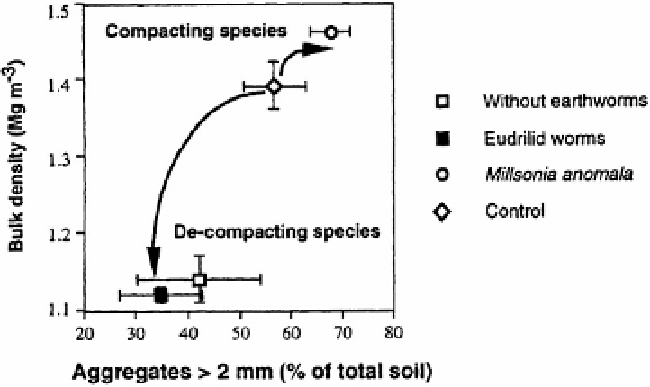Agriculture Reference
In-Depth Information
When earthworms were excluded from a soil in which they had built a macro-
aggregate structure, this structure remained intact for a long period (at least several
years) due to the stabilisation of aggregates that takes place over time. However, the
introduction of earthworms producing granular casts destroys the structure as large
aggregates are split into much smaller and more fragile units. Soil aggregation is
regulated through this process with small earthworms breaking down large aggregates
thereby preventing an excessive accumulation of large compact aggregates which
negatively affects plant growth (Rose and Wood, 1980; Chauvel
et al.,
1999).
Blanchart
et al.
(1997) have proposed the classification of endogeic earthworms into,
respectively, 'compacting' and 'decompacting' species, depending on their effects on
soil macro-aggregation and bulk density (Figure IV.55). In a series of experiments
conducted at Lamto (Côte d'Ivoire), undisturbed monoliths of soil dug out from the
savanna were de-faunated by temporary flooding and replaced in the field; some were
isolated from the surrounding soil with a fine stainless steel mesh and reinoculated either
with large-sized
Millsonia anomala,
or filiform
Chuniodrilus zielae;
in another treatment,
monoliths were reintroduced with no metallic mesh allowing recolonisation by the soil
fauna from the surrounding soil. After 20 months, aggregation and bulk density were
lowest in the treatment with filiform Eudrilid worms thereby confirming their effect as
soil 'decompactors'. In the absence of fauna, soil was significantly less aggregated,
whereas inoculation with
Millsonia anomala
significantly increased the bulk density and
the proportion of macro-aggregates >2 mm in diameter.


